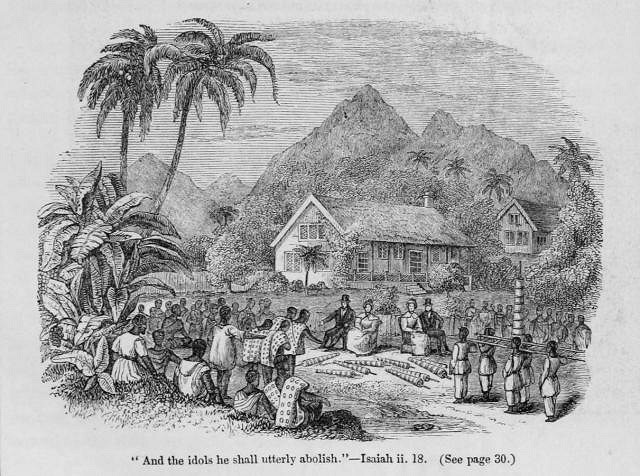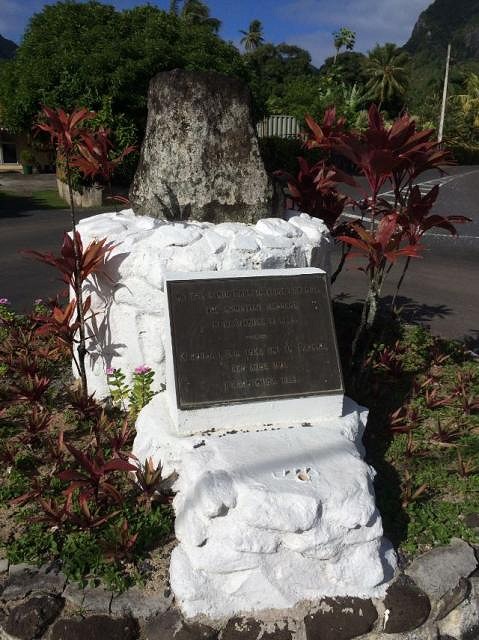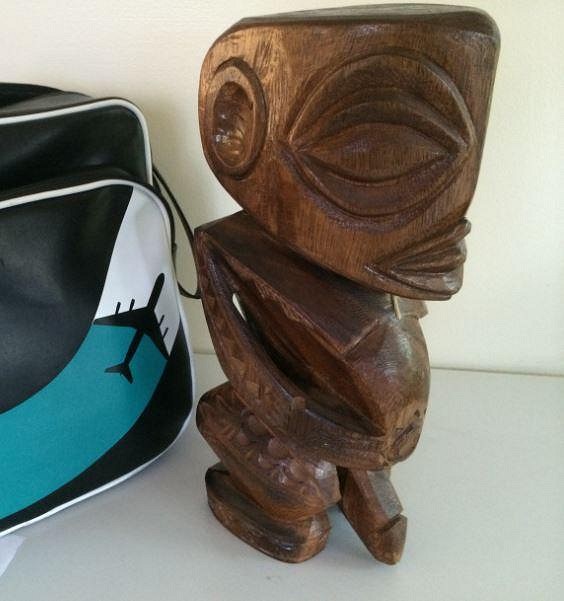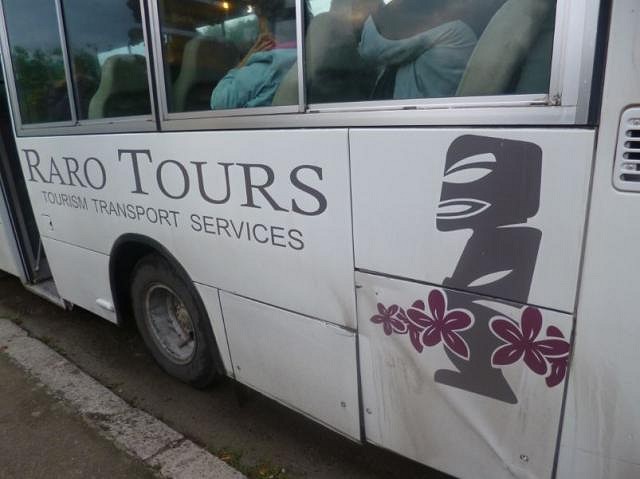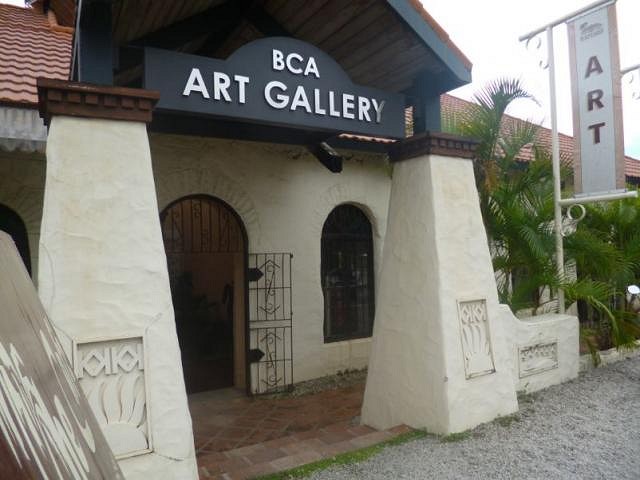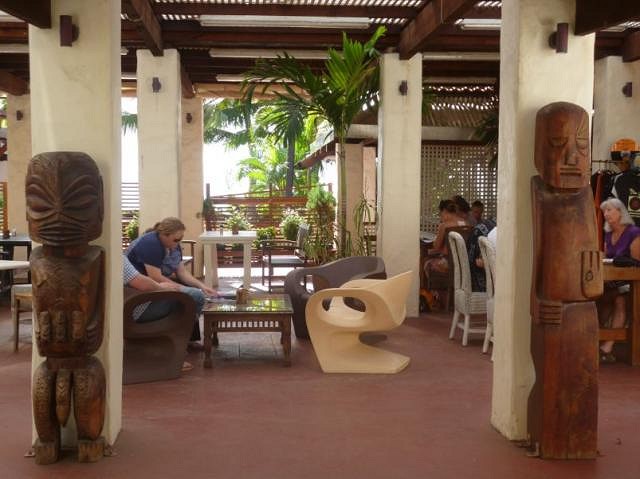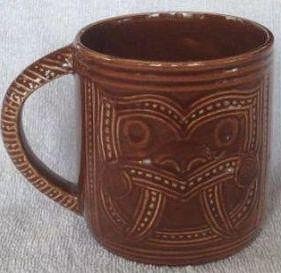Tiki Central / Tiki Travel / Club Nouméa's Rarotongan Tiki Tour
Post #766057 by Club Nouméa on Mon, Jul 11, 2016 6:40 AM
|
CN
Club Nouméa
Posted
posted
on
Mon, Jul 11, 2016 6:40 AM
Tiki Ground Zero: The London Missionary Society in Rarotonga
In Tahiti, there was a period of initial contact with Europeans which was largely missionary-free. Over the thirty or so years following the arrival of the HMS Dolphin in 1767 (captained by Samuel Wallis), the focus of the naval officers and sailors who manned the initial expeditions sent there from Britain and France was not on saving the souls of the islanders they met. Quite to the contrary, the loveliness of the Tahitian women and their reputation for a libertine approach to love gave rise to various trysts and openly libidinous scenes of an orgiastic nature that were more than enough to make any man of God blush. Consequently, when the first LMS missionary arrived in Tahiti in 1796, he had a lot of catching up to do, dealing not only with the heathen mores of Tahitians, but also with their unchaste interactions with the less-than-holy Europeans who had already been visiting the island for decades. By way of contrast, the first LMS missionary to land on Rarotonga, an islander called Papehia from Bora Bora, who had been trained by the LMS in Tahiti and was sent off to convert the Rarotongans, arrived there in 1823, only 9 years after the first recorded landing there by European sailors. He had a major impact.
The LMS soon gained sway in Rarotonga, although in the early 19th century they were no slouches in bringing about far-reaching changes in Tahiti either. Their Christian message of peace and love held great appeal to the islanders who, contrary to the idyllic picture painted by French philosophes in the 18th century, led difficult lives in backward, class-ridden societies ruled by tyrants who had the absolute power of life and death over commoners, along with a penchant for periodic internecine tribal wars, and subject to the whims of an arcane religion that included ritual human sacrifice. The cost of adopting Christianity however was the abandonment of much of their traditional culture, including heathen idolatry, and consequently tikis were high on the hit list of cultural icons that the missionaries wanted eliminated. By way of an example, behold Tangaroa, the Rarotongan god of fishing and fertility:
As he was never portrayed as anything less than well endowed, that alone was sufficient to bring down the missionaries' wrath on him, and he still draws the odd titter and shocked response from visiting tourists, to the extent that one local tour company even today feels the need to cover him up in much the same way that the 19th century missionaries covered up the nakedness of the Rarotongans themselves by encouraging them to wear Aunt Jemima dresses and the like:
Tikis were not the only traditional Rarotongan objects targeted for destruction by the LMS. God staffs (as shown in the first engraving above), used by the Rarotongans (like the Tahitians) as part of their religious ceremonies, were destroyed en masse, to the extent that very few of them survived. Consequently, nowadays these god staffs are horrendously rare and exchange hands at auction for enormous sums of money: The headquarters of the LMS still stands prominently along and near Makea Tinirau Road, right in the heart of Avarua, the capital of the Cook Islands. This is the locale that constitutes Ground Zero for the destruction of Rarotongan tikis. The LMS's facilities comprise a large rambling series of verandahed colonial buildings, churches, school buildings, store rooms, meeting grounds and graveyards, too large to capture in a single photo (even panoramic). To give an idea of the charm of the locale, in spite of the tiki havoc wrought there, here is a shot of the Takamoa Theological College, built in 1843, which is where indigenous missionaries were trained before being sent off to far-flung islands all over the South Pacific:
Equally picturesque is the Beachcomber Building, built by the LMS in 1845 on the waterfront by Avarua's harbour:
It was originally used by the LMS as a Sunday school and as a centre for community religious events. Nowadays it houses an art gallery, a couple of shops selling tourist items and... a café:
This idolatrous tiki-ridden scene is not quite what the London Missionary Society had in mind when it built the place in 1845. What is even more piquant is the fact that, on an island that nowadays tends to be overrun by New Zealanders and Australians, the café is owned and operated by an Englishman...
[ Edited by: Club Nouméa 2016-07-11 07:03 ] |

